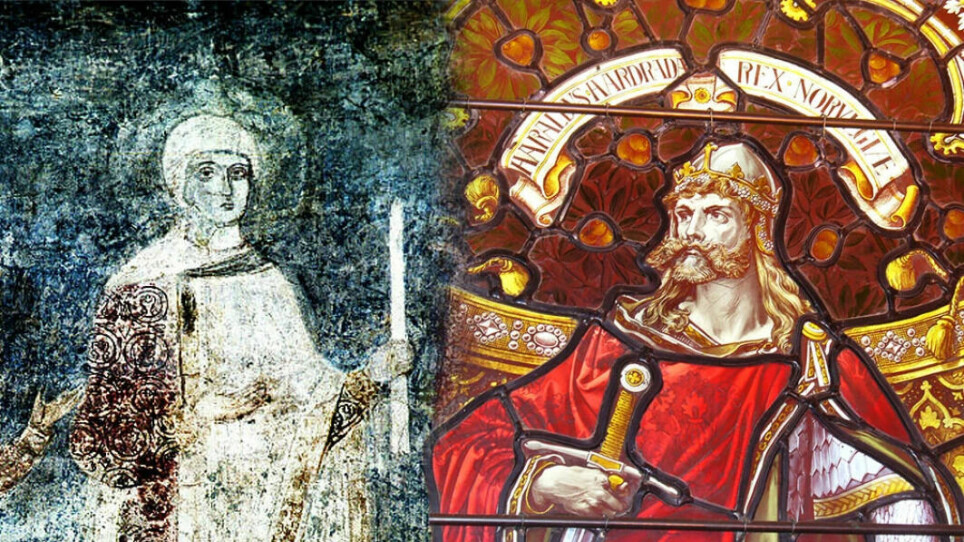
The Princess from Kyiv was Norway's last Viking queen
Harald Hardrada became the last Viking king of Norway. Ellisiv from today's Ukraine was his queen.
Garðaríki – the Garda kingdom, anglicised Gardariki – was what the Vikings called the country in the east.
Kyivan Rus’ was what the inhabitants themselves called their kingdom.
In present-day Ukraine, we know that residents a thousand years ago and even further back in time had names like Kari, Svanhild, Helga, Sigbjørn, Gunnar, Håkon and Trond.
Now the old Viking-Slavic kingdom, with its capital in the same place as Ukraine's capital today, has become part of the dispute between Russians and Ukrainians.
The Norwegian Museum of Cultural History in Oslo and the Ukrainian Embassy in Norway held an exhibition at the end of November that addressed the long historical ties between Ukraine and Norway.
Prince Yaroslav the Wise
Prince Yaroslav the Wise ruled Kyivan Rus’ in the middle of the 11th century.
The kingdom at that time flourished more than ever before or since. Under Yaroslav, the government was known as modern and cultured. The prince's children were well educated and could read and write.
His daughter Elisaveta - later known as Queen Ellisiv in Norway - was born in 1025. When Ellisiv's little sister Anna married the French king Henri I, she is said to have signed the marriage contract with her full name. Henri had to settle for making his mark with an X.
Yaroslav the Wise was himself the son of a Swedish Viking princess. His spouse, Ellisiv's mother, was named Ingegerd Olofsdotter and was the daughter of the Swedish king Olof Skötkonung.
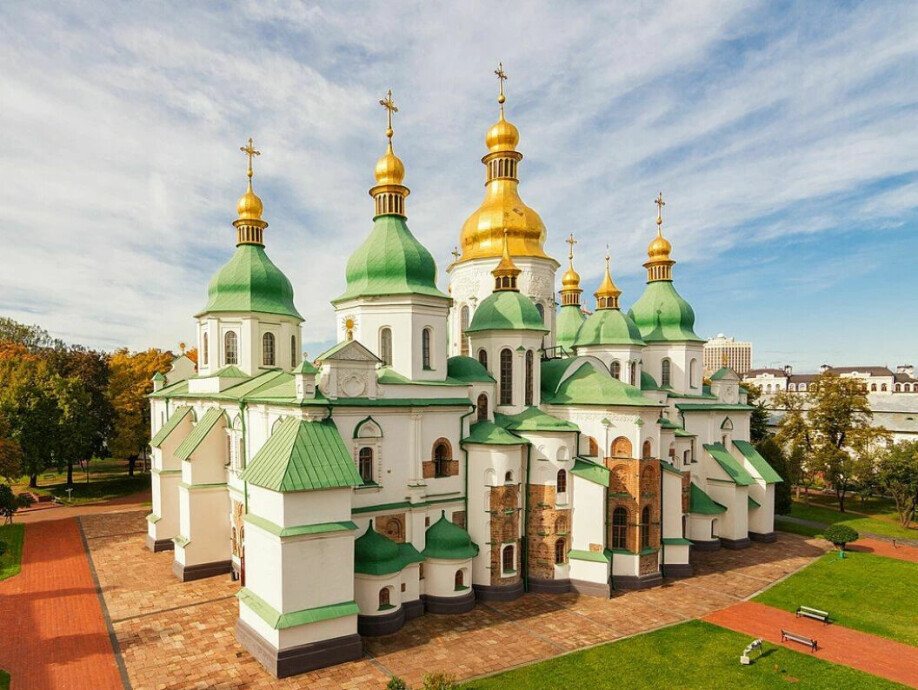
Harald in love with Elisiv
We know very little about Queen Ellisiv of Norway with any certainty.
What we do know is that Harald Hardrada had fought on the losing side with his half-brother Olav Haraldsson (later Olav the Holy) in the battle of Stiklestad in 1030.
After the defeat, 15-year-old Harald travelled to Kyiv, capital of Gardariki, via Sweden. Here Harald went into service with Yaroslav.
The young Norwegian is said to have possibly been quite forward even then and asked the prince for his nine- or ten-year-old eldest daughter Elisaveta's hand, but according to the Fagrskinna saga, he was told no.
In 1035, Harald went on to Constantinople with a guard of about 500 men to offer his services there as mercenaries for the emperor. Harald and his men may have fought against Turks, Arabs, Normans, Bulgarians and against pirates in the Aegean Sea.
According to Snorre’s account of what Harald wrote about the maiden in Gardariki, he did not forget Elisaveta and was probably still in love with her.
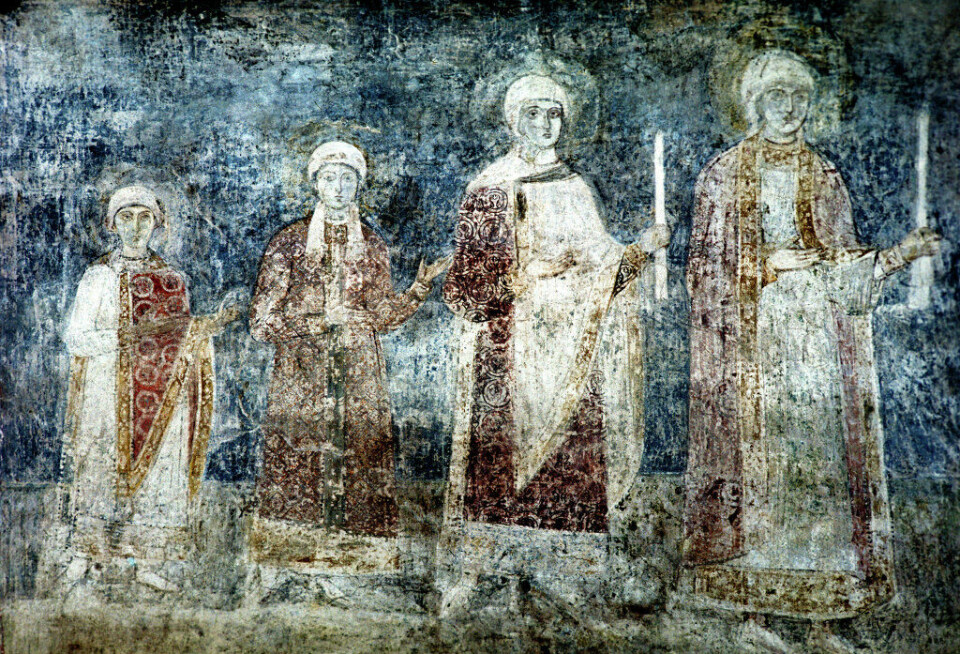
Harald weds in Kyiv
In 1043 or 1044, according to Snorre, Harald returned to Kyiv with ‘so much property that no man in the north countries had seen the like in one man's possession.’ Harald reportedly had to flee Constantinople, because Empress Zoe of Byzantium did not want him to leave.
In Kyiv again, the Norwegian this time won his Princess Ellisiv, as he had wished.
Harald became king of Norway.
Ellisiv from today's Ukraine became his queen.
Battle of Stamford Bridge in 1066
But Harald, who had been nicknamed Hardrada because his life consisted of so much war and violence, died in the Battle of Stamford Bridge in England in 1066.
The battle is considered by historians to mark the end of the Viking Age in Norway.
This is how Harald became Norway's last Viking king, and Ellisiv became the last Viking queen.
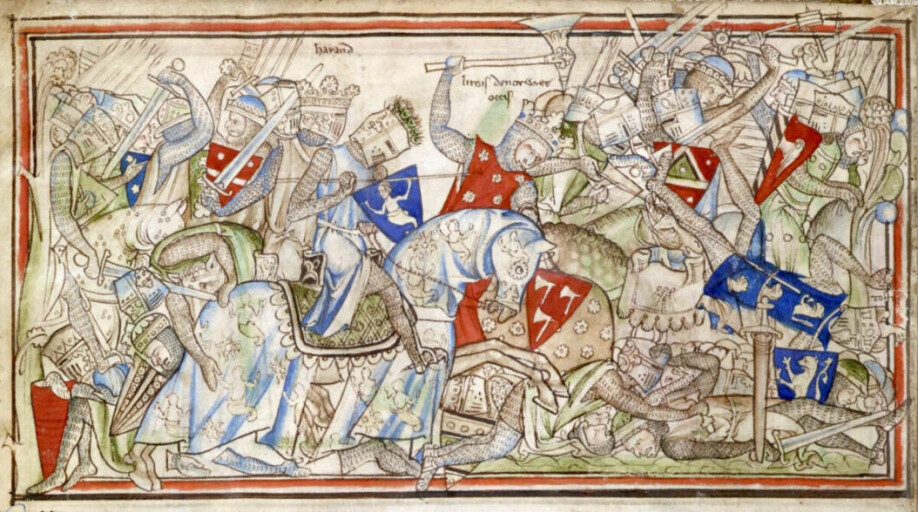
When did Ellisiv die?
We know almost nothing about Elisiv's time in Norway.
Some scholars have suggested that she might have already died before she and Harald arrived in Norway.
Harald had two sons, Olav and Magnus, with the Norwegian Tora Torbergsdatter, who was the king’s second wife or his mistress.
But according to Snorre, Ellisiv was the mother of Harald's two daughters, Maria and Ingegerd. On this point historians are less certain.
With Snorre as a source, it has also been common to assume that Ellisiv accompanied Harald on his war march to England in 1066. Whether this is true is also uncertain.
Snorre believes that she returned with the fleet to Norway after the defeat and that she died not long after.
A kingdom of Vikings and Slavs
The people in Gardariki were East Slavs and Scandinavians. Finns, Estonians and Balts also made up part of this newly formed state.
The Vikings in the kingdom went by the name Rus.
In the 11th century, many Vikings from Sweden and Norway travelled through Kyivan Rus’ and down to Constantinople. Miklagard (‘the big city’) was the Viking name for the capital of Byzantium.
Both in Kyiv and Constantinople, the Varangians (Vikings and Norse traders) sold their services as mercenaries.
This was a time of wars and conflicts.
But it was also a time of trade and long journeys to Europe.
Revealing historical works
A historical work written at the beginning of the 12th century in Ukraine can tell us a lot about Kyivan Rus’ and the Vikings in the east.
The monk Nestor in Kyiv was likely responsible for the Rus’ Primary Chronicle, also called the Russian Primary Chronicle or the Chronicle of Nestor.
The chronicle deals with the earliest history of Kyivan Rus’ from its founding in the 8th century until the 12th century.
Jan Bill, a professor of archaeology at the University of Oslo, has been active in the research on Kyivan Rus’ and the Vikings.
He shared more about the Primary Chronicle during a recent lecture at the Norwegian Museum of Cultural History.
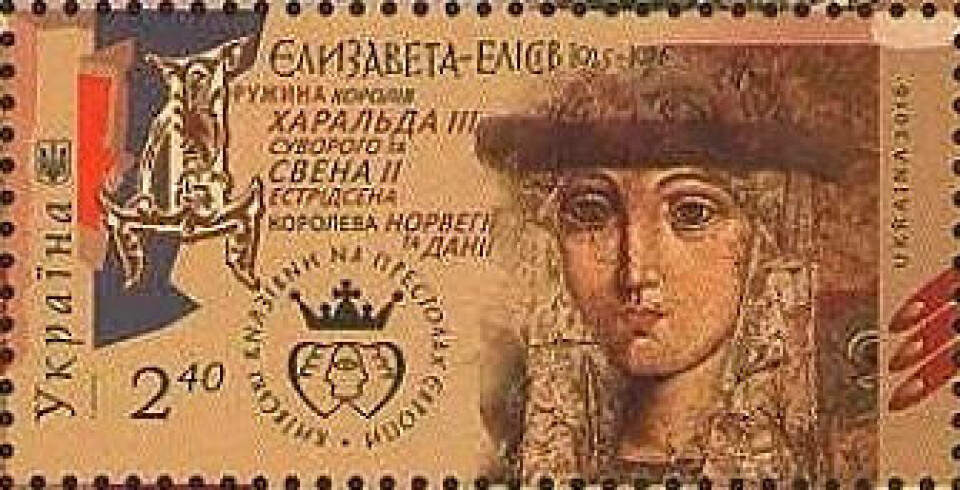
Special origin myth
“A lot of origin myths exist among different peoples and nations. The vast majority look back to a distant mythological past,” said Bill.
“What makes the Kyivan Rus’ origin myth so unique is that it’s based on events that happened only a few generations earlier.”
In the Primary Chronicle from the early 1000s, we hear about events that may have happened in the 8th century, making it more likely that parts of this origin myth are indeed true.
One story in the Chronicle that is special – and right now politically difficult for President Putin – tells about how the Vikings were invited by the people in the east to become their rulers.
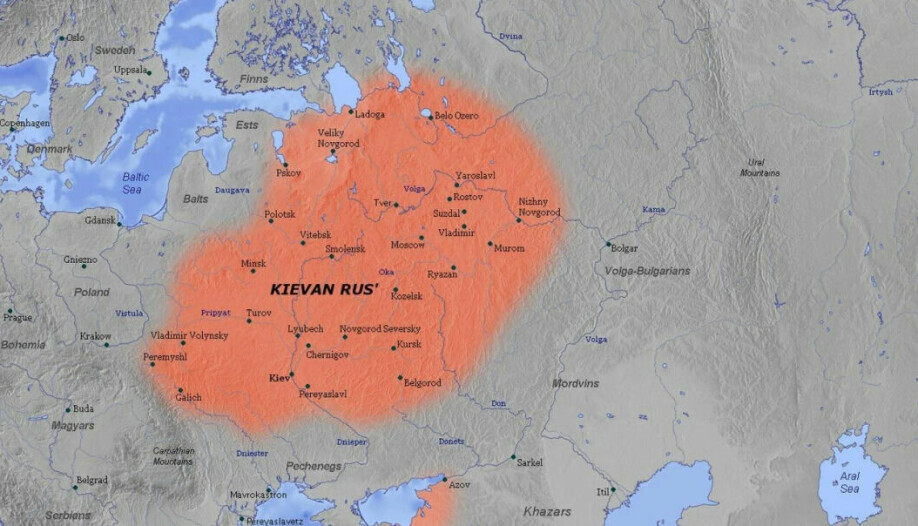
Are Vikings the original Russians?
In the year 862, according to the Primary Chronicle, the people were said to have chased the Værings (Vikings or Varangians) away across the sea because they did not want to pay taxes to them. However, the story continues like this:
‘They began to rule over themselves, but there was no justice among them, and family rose against family; there were feuds between them, and they began to make war among themselves. They said to each other: ‘We will seek for ourselves a prince who can rule over us and judge righteously.’ And they went across the sea to the Værings, to the Rus', because this is what these værings were called, just as others were called Swedes, still others Normans, Anglers, other Gotlanders (...) ‘Our land is large and fertile, but there is no order in it. Come therefore and be kings and rule over us.’ And they chose three brothers with their families, and they took all the Rus' with them and came (...) And after these events the Russian Empire got its name (...)’
The Primary Chronicle has been scrutinized carefully over the years and is of course highly debated – in great part because it so clearly tells us that Vikings from the other side of the Baltic Sea are the origin of Kyivan Rus’ and thus later Russia.
Vladimir Putin is said to be very taken up with the Slavic peoples and especially the history of the Russians.
Nordic names in Kyivan Rus’
Archaeologist Bill has dug up several manuscripts from Kyivan Rus’.
One of them tells about a diplomatic delegation sent to Constantinople in 911.
Fifteen emissaries were part of the delegation from Kyivan Rus’. Eight of them have recognizable Scandinavian names: Karly (Karl), Inegeld (Ingjaldr), Veremund (Vermundr), Rulav (Hrolleifr), Rudal (Hroaldr), Ruar (Hroarr), Truan (Trondr) and Lidul (Leidulfr).
“This text quickly tells us that quite a few people in this type of delegation from Kyivan Rus’ had Scandinavian names in the year 911,” says Bill.
“We find similar information in a trade agreement from the year 944 between the emperors in Constantinople and the Grand Duke Igor. Not only does the agreement state who journeyed to Constantinople, but we’re also told on whose behalf in the Kyiv kingdom they were travelling.”
“Here we learn that Ivor (Ivarr) went on behalf of Igors (Ingvar).”
Farther down the list of names from Kyiv in the year 944, we find more names we recognize as Scandinavian rather than as Slavic.
Women’s names include Helga, Kari and Svanhildr, and men’s names include Oleifr, Sigbjørn, Hakunn, Eirkr, Gunnar, Halfdan, Audunn, Thorstein and Sveinn.
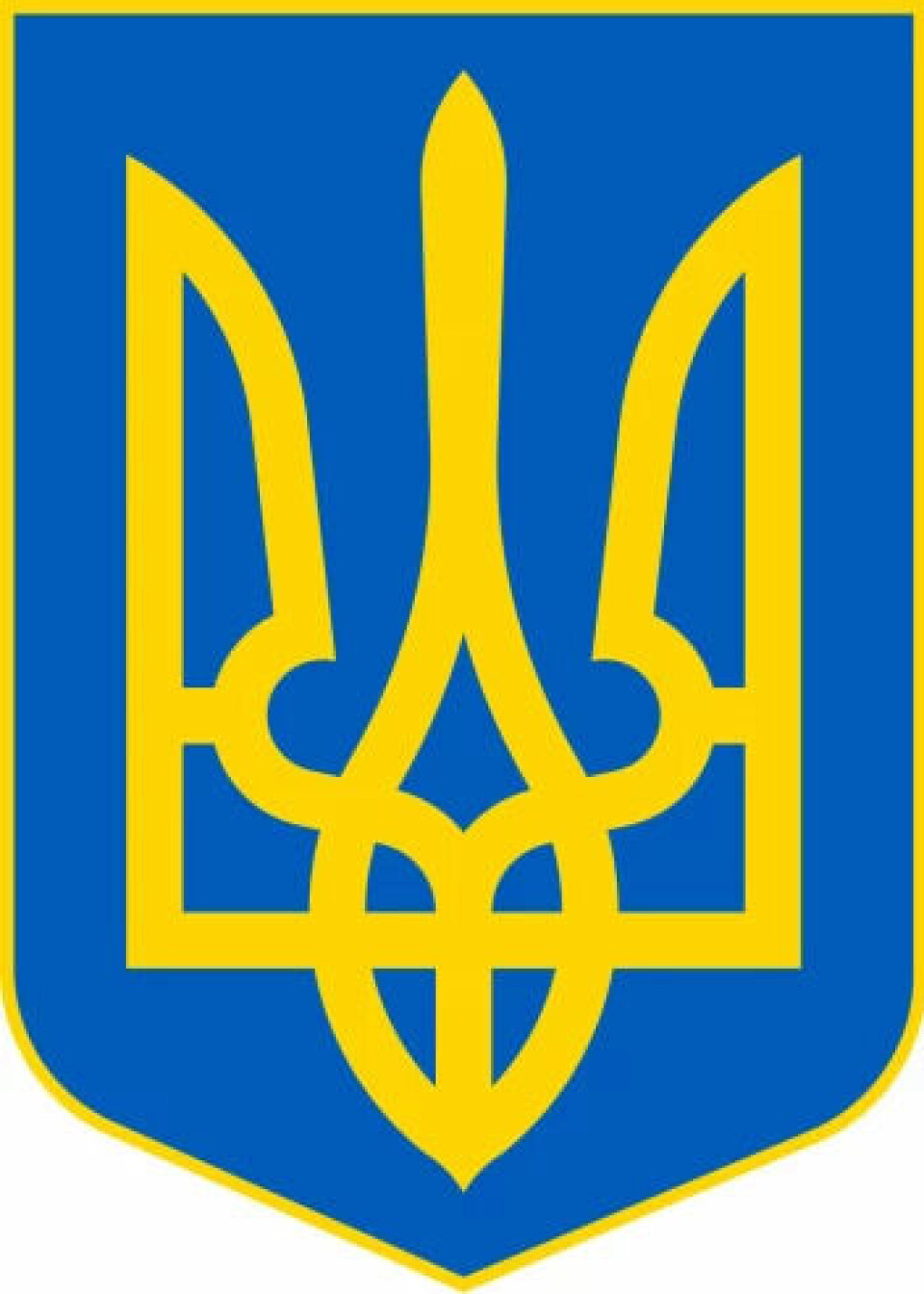
Kyiv as the centre
Trade between Constantinople in the south, Kyivan Rus’ in the middle and Scandinavia in the north picked up tremendously in the 11th century.
In the middle of all this trade was the city of Kyiv.
The 2 000-plus kilometre long Dnieper river flows through the city, which ends at the Black Sea in the city of Kherson.
The Dnieper was an important travel route for the Vikings from the north.
A dispute between various princes in Kyivan Rus’ arose after the death of Yaroslav the Wise (978-1054). The kingdom gradually split up into increasingly independent petty principalities.
In 1240 the Mongols invaded from the east.
Kyivan Rus’ – Gardariki – never rose again.
Nevertheless, it would be the descendants of Rurik, the very first Kyivan Rus’ prince, who ruled over the Slavs in Tsarist Russia for more than 700 years and a full 21 generations afterwards, right up to 1598. That was when the Romanovs took over power in Russia.
After the fall of the Soviet Union, the state of Ukraine was formed in 1991, with the same capital as the old Gardariki.
Where does the Rus name come from?
A common theory about the origin of the name Rus is that it refers to Swedes who came from Roslagen, the region north of Stockholm.
In Finnish and Estonian, Sweden is today called Ruotsi and Rootsi, respectively, and Ruotta in Northern Sami.
The origin might also be linked to ‘men who row’, or rors-menn, as helmsmen may be called in Norwegian.
Rowing was something Scandinavians were well known to do with their Viking ships on the big rivers of Gardariki, the Garda kingdom.
———
Read the Norwegian version of this article at forskning.no
This article was updated on December 23 2022. The first version of the article said 'Ukrainians and Russians formed the state of Ukraine in 1991', this was changed to 'the state of Ukraine was formed in 1991'.
-----



































